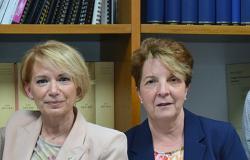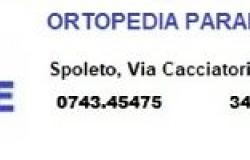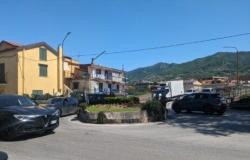The GOLD and STONE laboratories return to the Gold and Stone Museum of Salussola
Advanced course in goldsmith’s art, repoussé, chisel and metal wire from Tuesday 16 April to 4 June 2024 from 8.30pm to 10.30pm
Course for the maintenance and reconstruction of dry stone walls on 19-20-21 April 2024
The gold and stone laboratories return to the Gold and Stone Museum of Salussola
After the success of previous years, thanks to the expertise of the master Nicola Artiglia, the positive feedback from his teaching, the trust and appreciation of the supporting bodies, the goldsmith’s art of embossing, chisel and metal wire workshops are restarting. This year the master Nicola Artiglia, an excellent craftsman, goldsmith in Biella, who has collaborated with the museum for years, is offering an advanced course enriched with new techniques. We want to create an excellent training course in the sector. The course created as part of the Opere All’Oro project will take place in the eighteenth-century rooms of the Museum of Gold and Stone of Salussola in via Duca d’Aosta, the only Biella reality able to offer goldsmith art workshops as it is equipped with complete equipment made available to the students.
Gold
The activity develops in a cycle of eight lessons of two consecutive hours for eight weeks, from Tuesday 16 April to Tuesday 4 May 2024 from 8.30 pm to 10.30 pm.
Cost €100 including materials for max 8 students.
Registrations [email protected] by Saturday 13 April. Course supported by the CRB Foundation
Stone
The Salussola Gold and Stone Laboratory Museum in network with the Associazione Fondiaria La Serra di Chiaverano has resumed courses to enhance the rural architecture of the terraced landscapes of the Serra moraine amphitheater. The laboratory will begin on Friday 19 April 2024 at 8.30 pm at the Gold and Stone Museum of Salussola via Duca d’Aosta 7, with a theoretical lesson – lasting approximately an hour and a half – which introduces the origins and functions of the retaining walls of the terraces; Saturday 20 April at 8.30 am, we will move from the Museum to the construction site to begin the practical part – setup, tools, choice of materials and all the operations useful for the reconstruction of the dry stone wall. A lunch break will follow which constitutes a convivial moment, in the afternoon the activity will resume for around four hours; the work will be completed on the morning of Sunday 21st. Total cost of 30 euros, including insurance coverage, supported by Lega Ambiente. Lunch offered by Anffas Cascina Carrubi, headquarters of the construction site. Registration by April 17th, max 15 participants [email protected]. Course supported by the CRB Foundation
Stones, like individuals, are all different
“… In dry stone walls, just as friction is the binder between stones, cooperative work is the binder between people…” The volunteers of the Museum of Salussola and Asfo propose this interesting initiative which has sparked lively interest and enthusiasm in previous editions, as they interpret this activity not only as environmental and landscape recovery but also and above all as “relationship restoration”. The stones, like individuals, are all different: different in shape, origin, size, consistency and colour, but each one placed in the right place helps to form a robust, beautiful, solid and functional structure. Likewise, within this specific collective work, people all prove useful, despite their differences and individual skills. The course intends to enhance the rural architecture of the terraced landscapes of the Serra moraine amphitheater.
The territory
The hilly area of Serra is home to excellent production activities, as well as a welcoming area for growing sustainable tourism. The desire to preserve the uniqueness of this environment requires skilful restoration work that unites the tradition of the past with the emerging innovative agrotourism entrepreneurial aspirations. The course is an integral part of the project for the sustainability of the territory, for the reduction of hydrogeological risk and for the fight against abandonment; aims to recover and enhance the function of terraces that have been abandoned for a long time; to activate preventive interventions on the fragility of the territory; to encourage maintenance actions in order to keep the accesses and paths functional to agricultural and hiking activities passable; to recover and restore the characteristic rural architecture of the area; to preserve and pass on an ancient construction technique. With the recovery of ancient techniques, new professionalisms are promoted.
Continue reading the news from La Provincia di Biella and follow our Facebook page
Tags: gold stone laboratories return Gold Stone Museum Salussola






